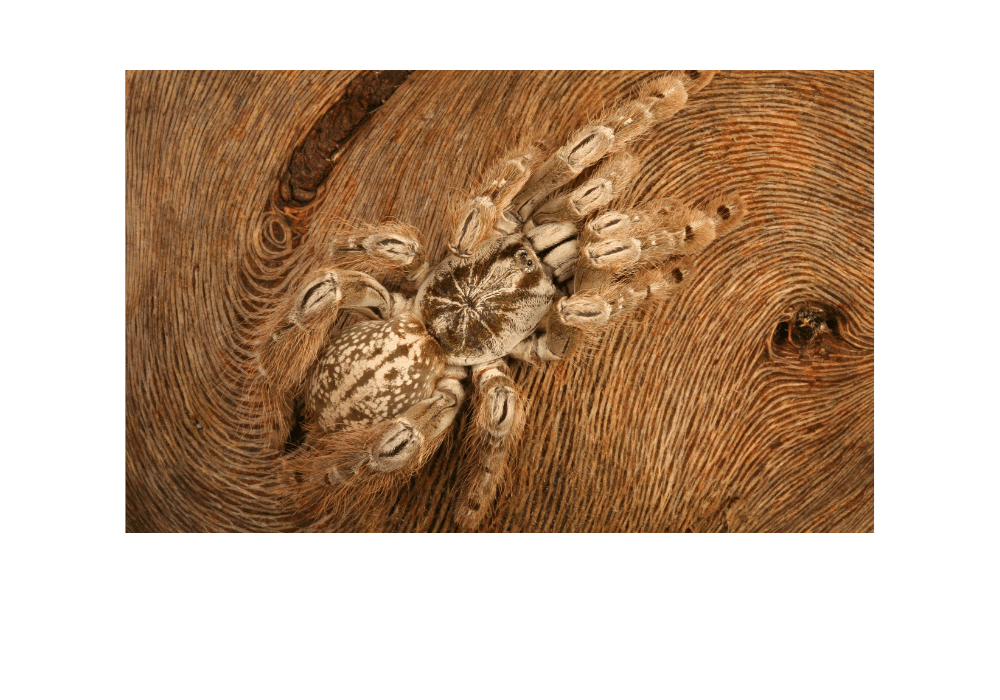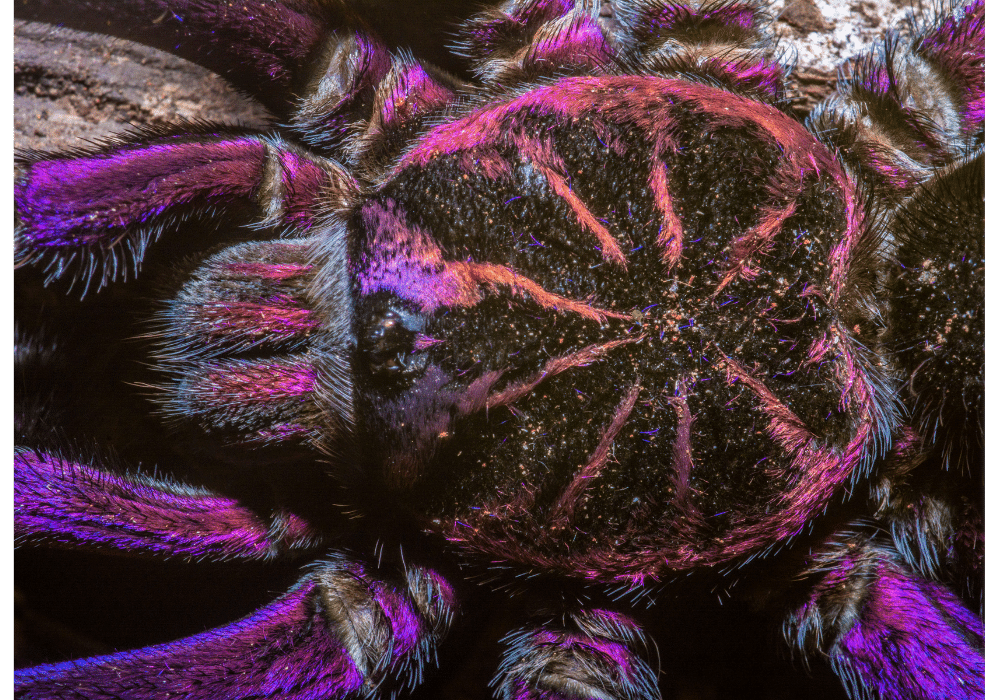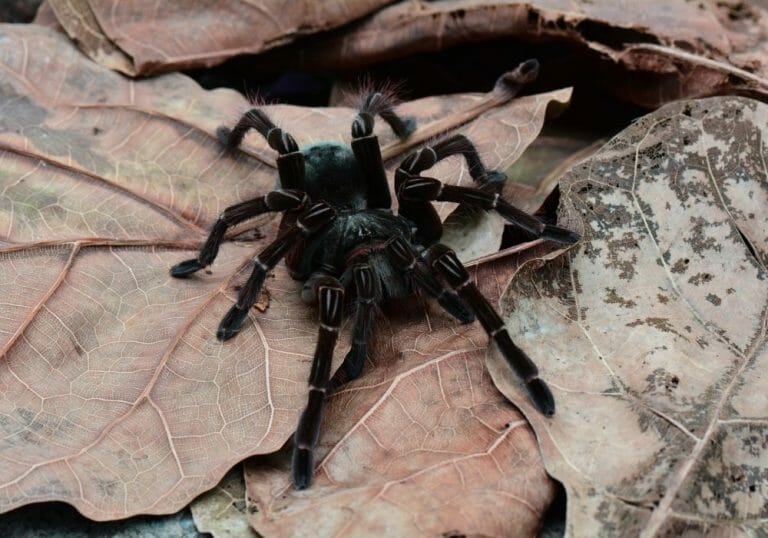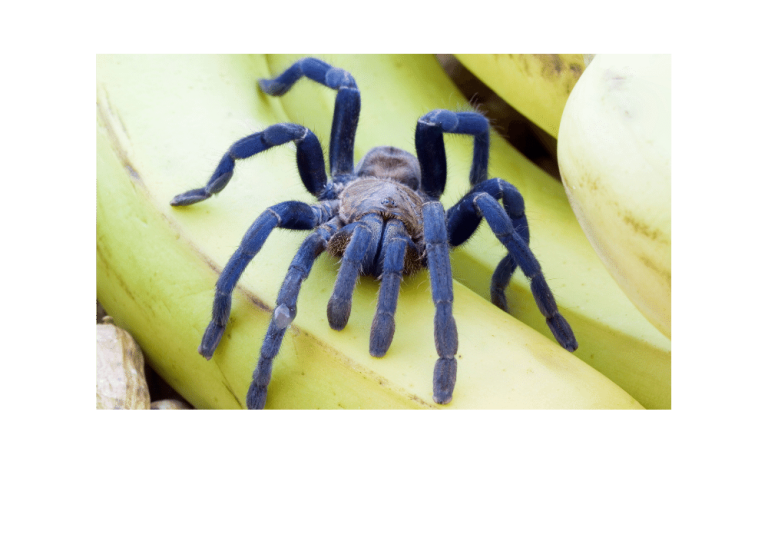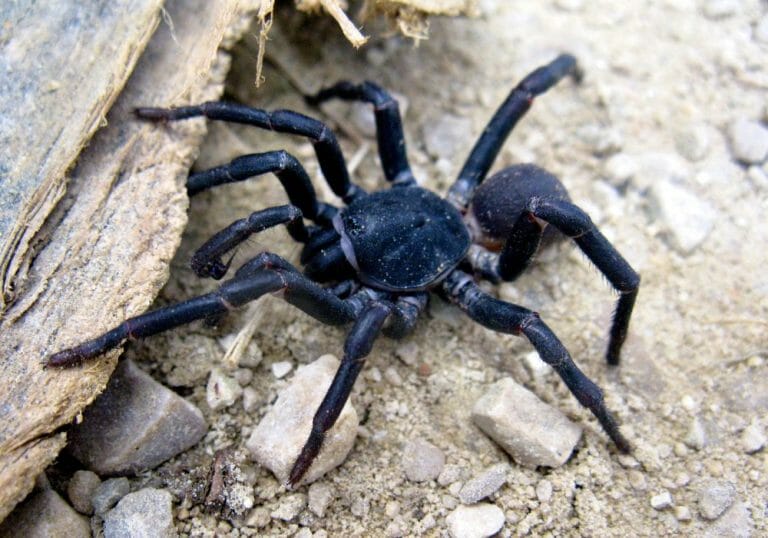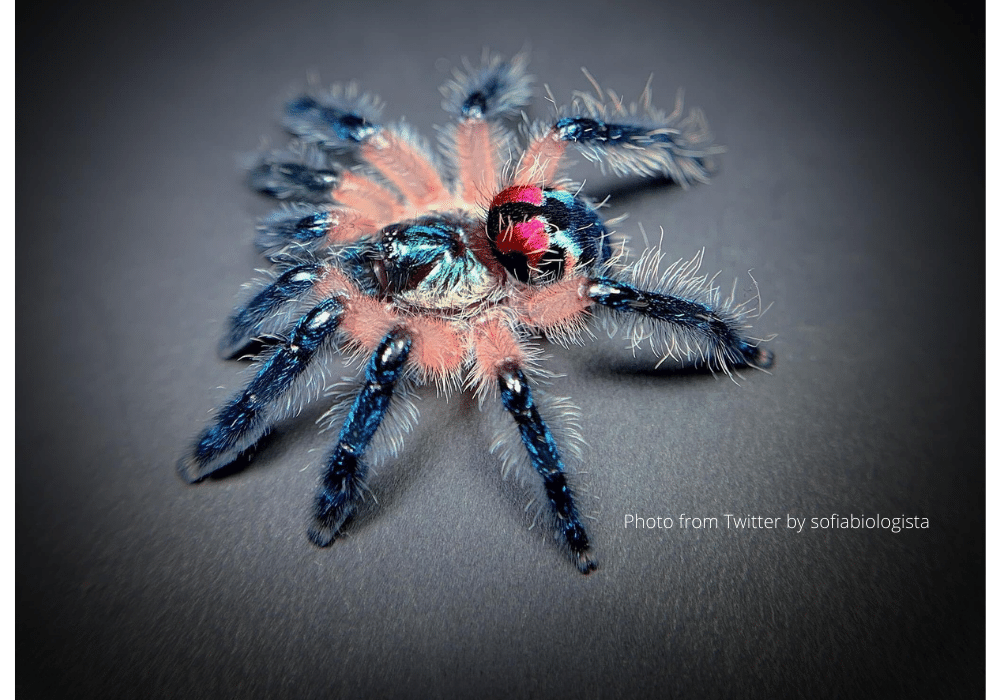Feather Leg Baboon Tarantula (Everything You Need To Know)
Common name: Feather leg baboon
Scientific name: Stromatopelma calceatum
Feather Leg Baboon Tarantula (Stromatopelma calcium) is one of the most aggressive and dangerous tarantulas available today.
The West African feather leg baboon’s colors and pattern make it a magnificent bird spider.
If you’re a newbie keeper, you should turn away now. Only experienced tarantula keepers know how to care for this specific tarantula.
All of the relevant information about this beautiful tarantula is contained within this care sheet, such as how to feed, house, and behave around it.
Habitat
Feather leg baboons produce a primitive tube web in the lower forest’s upper fern and palm tree zones.
Appearance
While this tarantula’s appearance is not exceptionally bright or colorful, it is visible and easy to detect. This is a typical behavior pattern for baboon tarantulas.
The females’ bodies are covered with clay-colored setae and are often a dark sandy brown in appearance. But, then, they have a highly distinctive pattern of nearly metallic black markings on their carapace, legs, and abdomen.

Males’ bodies are grey with darker grey patterns.
This is an average-sized tarantula. Females usually reach a leg span of slightly more than 6 inches, while males measure considerably smaller. They increase, reaching this size in only a few years.
There is a gradual change in their appearance as they mature into adult spiders.
Temperament
This tarantula’s temperament makes it both deadly and desirable. Few other species cause fear in people the way this one does.
They’re exciting tarantulas while they’re in their enclosure. They are an arboreal species; however, they have been observed digging shallow holes and rearranging decorations.
Venom
Known as an “old world” tarantula, the Feather leg baboon is one of the most venomous tarantulas. It is known for its aggressive/defensive attitudes and that they possess highly potent venom. It’s most probably solid.
Bite reports from captives indicate that Feather leg baboon venom is toxic to humans. Depending on where the bite happened and how much venom was released, this could be an unpleasant experience. However, no significant scientific experiment has yet been conducted.
Origin
From Guinea to Cameroon, the Feather leg baboon is the most widespread species of the genus in West Africa’s countries, with populations ranging from Sierra Leone to Liberia, the Ivory Coast to Burkina Faso, and Ghana. It is also found in Benin, Nigeria, and Benin.
Span Width
Approximately 14-16cm. Males and females of Feather leg baboons are sexually dimorphic, while females are generally larger and heavier. Males don’t have tibial spurs.
Growth Rate
Fast
Size
Adults usually reach a height of about 2.5 inches and have a leg span of approximately 5 to 6 inches.
Average Life Expectancy
Females live 12-15 years. However, males have a reduced life expectancy of 3-4 years.
Temperature/Humidity
Tarantulas, especially this hardy arboreal variety, are robust creatures, but it’s essential to match the temperature of their enclosure with the environment of their geographical origin.
Feather leg baboon is found throughout West Africa, a relatively hot and humid location throughout the year.
75°F to 80°F is the ideal temperature range for this species. As a result, additional heating is rarely required.
If the temperature in your home constantly falls below this level, you may need to invest in a space heater or a low-wattage heat lamp.
The ideal humidity level is between 70 and 80 percent. Therefore, using a water dish and spraying half of the substrate three times a week may be easily maintained. However, avoid allowing the substrate to become swampy.
Diet
As expected, this venomous tarantula has a voracious appetite. These tarantulas will feed on various fruit flies and pinheaded crickets as spiderlings. However, as they mature, you can change to adult cricket and Dubai roaches.
It is recommended to feed young tarantulas every 4-7 days and adults every 7-10 days.
Sexing
Sexing can be performed at a diagonal leg spread of 2.5′′-3′′ and is most accurately accomplished through molting. Males will have a single slit that is resistant to manipulation. A prominent spermatheca and uterine externus appear as a “flap” that always catches and opens when a pin gently runs along with it.
Coloration/Patterning
Feather leg baboon slings are a mottled golden brown color. As they molt and mature, their coloration progressively changes to a flat beige-grey on the carapace and black patterns on the abdomen and legs, which is their adult coloration. Adult legs feature reddish setae.
Behavioral Patterns
Feather leg baboon is not social species, and cohabitation will almost certainly result in cannibalism.
Behavior
Extremely defensive. Initially, the spider will flee. Provocation can lead to a bite. Younger spiders have been burrowing and looking for shelter higher up, occasionally forming a beautiful web. If they are provided with the ideal housing, as is expected, they will be visible only at night.
Housing
If you intend to bring this tarantula home, you must ensure that its enclosure is entirely ready to go. As this is an aggressive tarantula, you should infrequently engage with its section.
Because of this, we are constructing an ideal enclosure that requires little more than purchasing the best tarantula cage and equipping it with a few items.
The Most Effective Enclosure
It is best to provide them with a regular arboreal enclosure to accommodate these arboreal tarantulas with a solid drive to climb.
Arboreal tarantula enclosures provide tarantulas with many vertical areas to climb and web up. Appropriate floor space should be provided, but this should be higher than wider.
An extensive climbing area and excellent ventilation will be required to provide the best possible enclosure for this species. If you’re confused about what size to get, it’s always preferable to go relatively larger than smaller.
The 18″ x 18″ x 24″ glass terrarium is ideal for a mature Feather leg baboon. There are less expensive alternatives, but you must ensure that they are ventilated, secure, and spacious enough for your needs before purchasing.
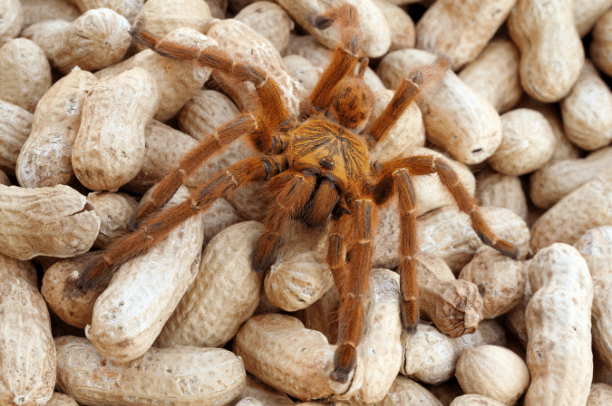
Decorations for Enclosures
Whereas the terrarium is vital to the enclosure’s decor, interior accessories must also be considered.
The bottom of the enclosure should be lined with roughly 3 inches of a moisture-retaining substrate. This substrate provides comfort, structure, humidity stability, and a digging surface.
An arboreal species that have been spotted burrowing into the substrate should require only 3 inches of space.
To develop a tree-like habitat, you’ll need to build upward from the substrate.
It’s also critical that you provide your tarantula with a water dish. This also prevents dehydration and also maintains the enclosure’s humidity level.
Health Issues
Tarantulas raised as pets aren’t fussy and don’t have many health issues. As far as the enclosure is adequately maintained and the diet is balanced, they have a good chance of living a long healthy life.
However, captive tarantulas are susceptible to two semi-common problems: dehydration and parasites/mites. Both of these concerns, however, are solved efficiently and wholly avoided.
As an arboreal tarantula, it necessitates a lot of climbing space. If the enclosure does not satisfy its needs, it may have hindered growth and suffer additional problems.
In addition, this tarantula moves quickly and is prone to unexpected attacks. This could be dangerous to the tarantula if it jumps from its enclosure and falls.
Price and Availability for Sale
Although this tarantula is incredibly dangerous and fascinating, it is comparatively cheap—cheap pricing results from its obscurity and inaccessibility.
You can locate this Feather leg baboon tarantula for sale on various online markets at consistent pricing. Tarantula prices can vary widely, but they’re still highly affordable. Spiderlings are roughly $30, males are around $70, and females are around $100.
Only skilled tarantula keepers should keep Feather leg baboon tarantula. It’s beautiful but defensive, and its bite packs a powerful punch.
Essential Information For Breeders
- When Feather leg baboon mates, everything goes as planned. Cannibalism is a possibility. Immediately after mating, take the male out of the area.
- When a spider has finished molting, it should not begin breeding for another 4-6 weeks—female sheds during pairing and cocooning, releasing eggs unfertilized.
- Before introducing the male, ensure that the female spider is well-fed (but not obese).
- Mating should occur during the dry season or towards the end of the wet season. To entice a female, you need to gradually increase the humidity in the environment.
- Females may begin building their cocoons within the first two to four months after mating. Five weeks later, deprive the cocoon, as recommended. When storing the eggs, maintain a humidity level of 80-90 percent and a temperature range of 25-29°C. Expect between 200 and 300 spiderlings to emerge.
- The cocoon should be monitored if you are leaving it in the care of a female. It is well-known that a Feather leg baboon will aggressively defend its cocoon if it is not adequately cared for.
A Few Remarks
- Despite its attractive adult look, this species of African arboreal spider is capable of inflicting serious injury with its bite.
- Due to the potency of this species’ venom, extreme care should be exercised while the enclosure is opened.
- Although they prefer to remain hidden, they can be observed on daytime walkabouts when the room in which their enclosure is located is relatively quiet.
- These young arboreal tarantulas prefer to bury as slings and upward as they grow.
Related Posts
- Brazilian Blue Tarantula (Everything You Need To Know)
- Thailand Black Tarantula (Everything You Need To Know)
- Thai Tiger Tarantula (Everything You Need To Know)
- Feather Leg Baboon Tarantula (Everything You Need To Know)
- Blue Baboon Tarantula (Everything You Need To Know)
- Trinidad Olive Tarantula – All Facts
- Purple Bloom Tarantula – All Facts
- Brazilian Jewel Tarantula (All Facts You Need To Know)
- Mink Vs. Ferret – All You Need To Know
- Why Does My Cat Lick Me Then Bite Me?
